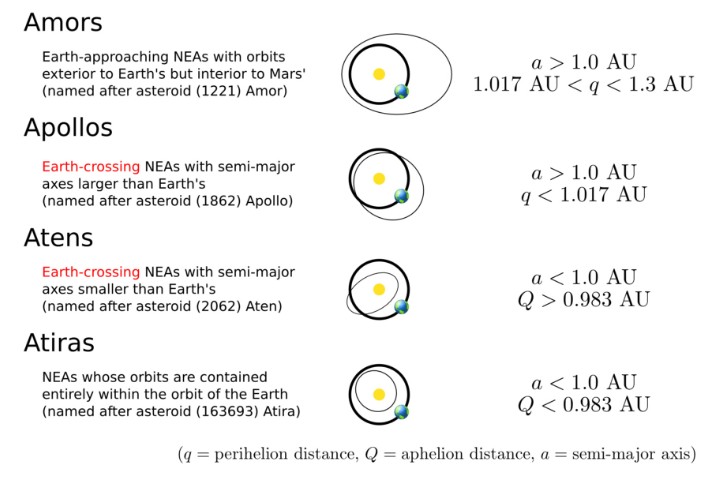Asteroid 2018 DU to flyby Earth at 0.74 LD on February 25

A newly discovered asteroid designated 2018 DU will flyby Earth at a distance of 0.74 AU / 0.00190 AU (~284 235 km / 176 616 miles) on February 25, 2018. This is the 17th known asteroid to flyby Earth within 1 lunar distance since the start of the year and 8th this month.
This is Apollo class asteroid first observed at Catalina Sky Survey on February 23, 2018. Its estimated diameter is between 5.9 and 13 m (19.3 – 42.6 feet) and its closest flyby is expected at 18:22 UTC on February 25 at a speed (relative to the Earth) of 4.60 km/s.
[ Ephemeris | Orbit Diagram | Orbital Elements | Physical Parameters | Close-Approach Data ]
The next time this asteroid comes nearly as close will be on February 24, 2032 at a distance of 2.2 LD.
As of February 22, there are 17 846 known near-Earth objects (NEOs) – asteroids and comets with perihelion distance less than 1.3 AU (194 million km / 120 million miles). Of that number, 17 739 are near-Earth asteroids (NEAs).
NEAs are divided into 4 groups – Atira, Aten, Apollo and Amor – according to their perihelion distance (q), aphelion distance (Q) and their semi-major axes (a).

Of the total number of known NEAs (17 739), 888 have diameters roughly 1 km (0.62 miles) or more, 8 059 have diameters roughly 140 m (459 feet) and more, 1 886 are potentially hazardous asteroids and 157 are potentially hazardous asteroids with diameter 1 km and larger.
Potentially Hazardous Asteroids (PHAs) are currently defined based on parameters that measure the asteroid's potential to make threatening close approaches to the Earth.
Specifically, all asteroids with an Earth Minimum Orbit Intersection Distance (MOID) of 0.05 AU or less and an absolute magnitude (H) of 22.0 or less are considered PHAs.
In other words, asteroids that can't get any closer to the Earth (i.e., MOID) than 0.05 AU (roughly 7 480,000 km or 4 650 000 miles) or are smaller than about 140 m in diameter (i.e., H = 22.0 with assumed albedo of 14%) are not considered PHAs.
Reference:
Asteroid 2018 DU at Minor Planet Center; at CNEOS
Featured image: The green line indicates the object's apparent motion relative to the Earth, and the bright green marks are the object's location at approximately one-hour intervals. The Moon's orbit is grey. The blue arrow points in the direction of Earth's motion and the yellow arrow points toward the Sun. Credit: Minor Planet Center.

Commenting rules and guidelines
We value the thoughts and opinions of our readers and welcome healthy discussions on our website. In order to maintain a respectful and positive community, we ask that all commenters follow these rules.